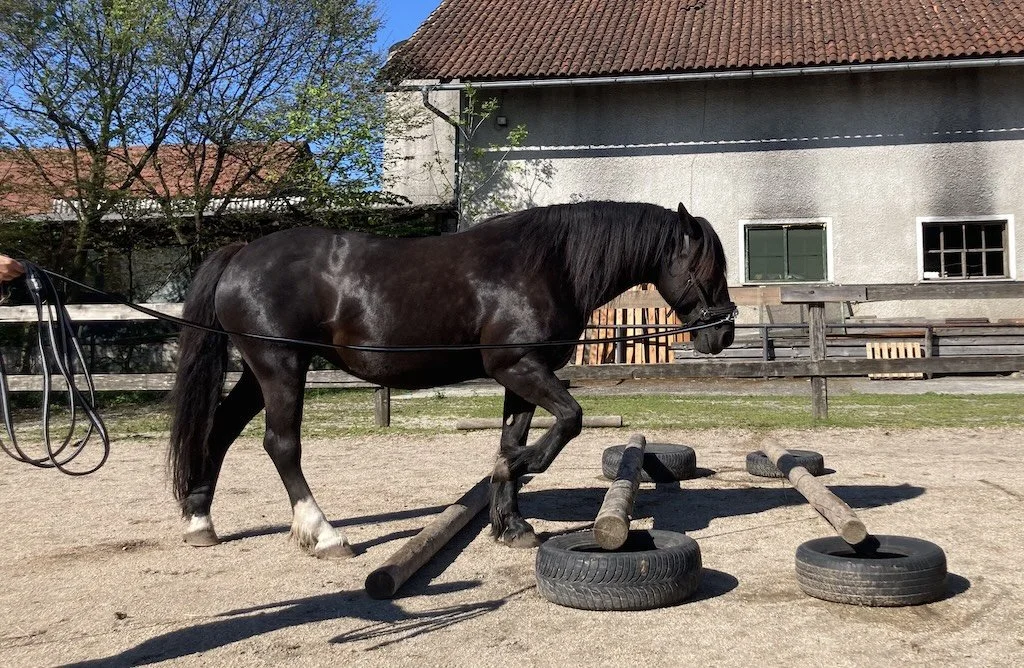The five rules of lunging horses
Lunging the horse is a great way to keep them balanced and fit, but we need to follow certain guidelines if we want to make sure we are not harming them in the process.
When it comes to working on the lunge, posture is everything.
Working our horses on the lunge is an absolutely brilliant tool to help them become balanced, strong and coordinated without the added burden of a rider. By asking them to travel in a circle around us, we can work with them in all three gaits without having to run alongside them. It also enables us to observe their posture and way of going closely, and make necessary adjustments to their locomotion. As with all things, lunge work is great when done correctly, and can be very bad when done incorrectly. Here are five rules to keep in mind while working with your horse on the lunge.
1. Posture is everything. Horses are made to travel in straight lines, so moving on a circle is actually a pretty difficult task for them. It is very easy for them to try to tackle the centrifugal force by becoming crooked and crookedness always means that one part of the body will be working too much and another one won't be working enough. In the long run, this can lead to injury, so we want to make sure our horses aren't traveling crooked on the lunge. Working on the lunge is only beneficial if the horse can do it in a healthy posture.
2. Lunging is not a tool for getting rid of excess energy. Many riders use the longe as a means of tiring out their horse before they ride them. This means the horse will often buck, jump and gallop on the lunge, which is actually a very bad idea. Traveling at high speeds on a circle increases the risk of injury. While it is normal to some extent that the horse will want to get rid of some excess energy when on the lunge, it should not be encouraged or desired. Providing more turnout or pasture time might be a better way to go with these horses.
3. Be careful with lunging aids. Many horse owners use lunging aids without even knowing exactly why they do it. If we don't have a clear goal in mind, most lunging aids, can actually do more harm than good as they can create a lot of tension, especially in the poll area. It is a much better idea to take the time to teach the horse how to carry himself properly than to simply force him into a certain position.
4. Less is more. Like we said, moving on a circle is a difficult task, so don't spend too much time lunging your horse. In the beginning, the length of the session can be determined by how long the horse can maintain a good posture (5-10 minutes). As he progresses and is able to carry himself correctly for longer periods of time, you can prolong the session, but never work them for more than 30 minutes. Be sure to take frequent breaks in between the session as well.
You can add poles or cavaletti to your lunge session to keep it interesting.
5. Make work fun. Lunging might seem very boring to many riders and horses, but you can (and should) make it a fun as possible. Keep the work interesting by adding some ground poles, lots of transitions and change the rein often. You can also add some small jumps or lunge on a slope if your horse is up for it. Why not make the session fun by seeing how small you can make you cues for the horse to follow them? Can you do a transition to trot with your body language alone? In this way you are not only training the horse's body, you are also developing the communication between you two and becoming more aware of your own body.

